Does Chilling Your Cookie Dough Actually Do Anything?
Do you really need to chill your cookie dough? #BFChocolateChipCookie
Welcome to BuzzFeed's Best Chocolate Chip Cookie Guide. Over the past few weeks we've baked over 400 cookies — testing every possible variable from dough temperature to sugar variety in an attempt to find the best possible formula. You can get an overview of the entire experiment here.
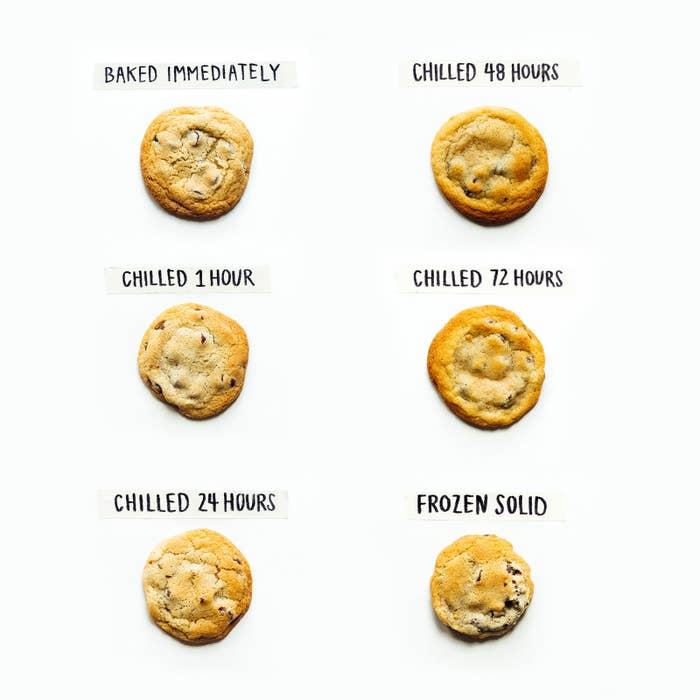
You might've heard that baking is an exact science and figured that as long as you measure your ingredients out correctly, you're solid. And sure, following a written recipe is one major part of it — but when it comes to making cookies, tiny variables like the temperature of your dough and how long it's been sitting there ready to bake can affect your cookie far more than you might think.
It's a factor called "ripening," and it's the variable that gets overlooked the most. In simpler terms, "ripening" refers to resting cookie dough in the fridge prior to the baking process. This single act of patience does two things: It firms up the fat, and it allows more time for the flour to absorb the moisture from the eggs. Theoretically, ripening your dough will give you cookies that brown better, bake evenly, and are more complex in flavor — or so the internet tells us.
Now, many home bakers prefer to load that dough into the oven right away — either to stop themselves from eating it all before it gets a chance to transform, or because they see no point in ripening their dough. But there's a congregation of professional bakers who'll let doughs rest for hours, days even, to achieve that picture-perfect cookie.
"Resting or ripening dough allows the flour to hydrate resulting in a more even bake and browning — and causes the fat to solidify resulting in less unwanted spreading," says Zac Young, pastry director for Craveable Hospitality Group. "Personally, I scoop the dough right after it is made, refrigerate it for an hour, then bake."
To better understand why chefs swear by this technique — and how it affects cookies — we decided to test five batches of cookies and compare them in a side-by-side taste test. We stuck to six of the most popular ripening times professional bakers swear by and kept all of the other variables the same. We used the classic Nestlé Toll House cookie formula as our base recipe and simply varied ripening times, keeping all other variables the same.
If you can't see the sign-up box above, just enter your email address here.
Here are the six ripening times we tested and how they affected the cookie:
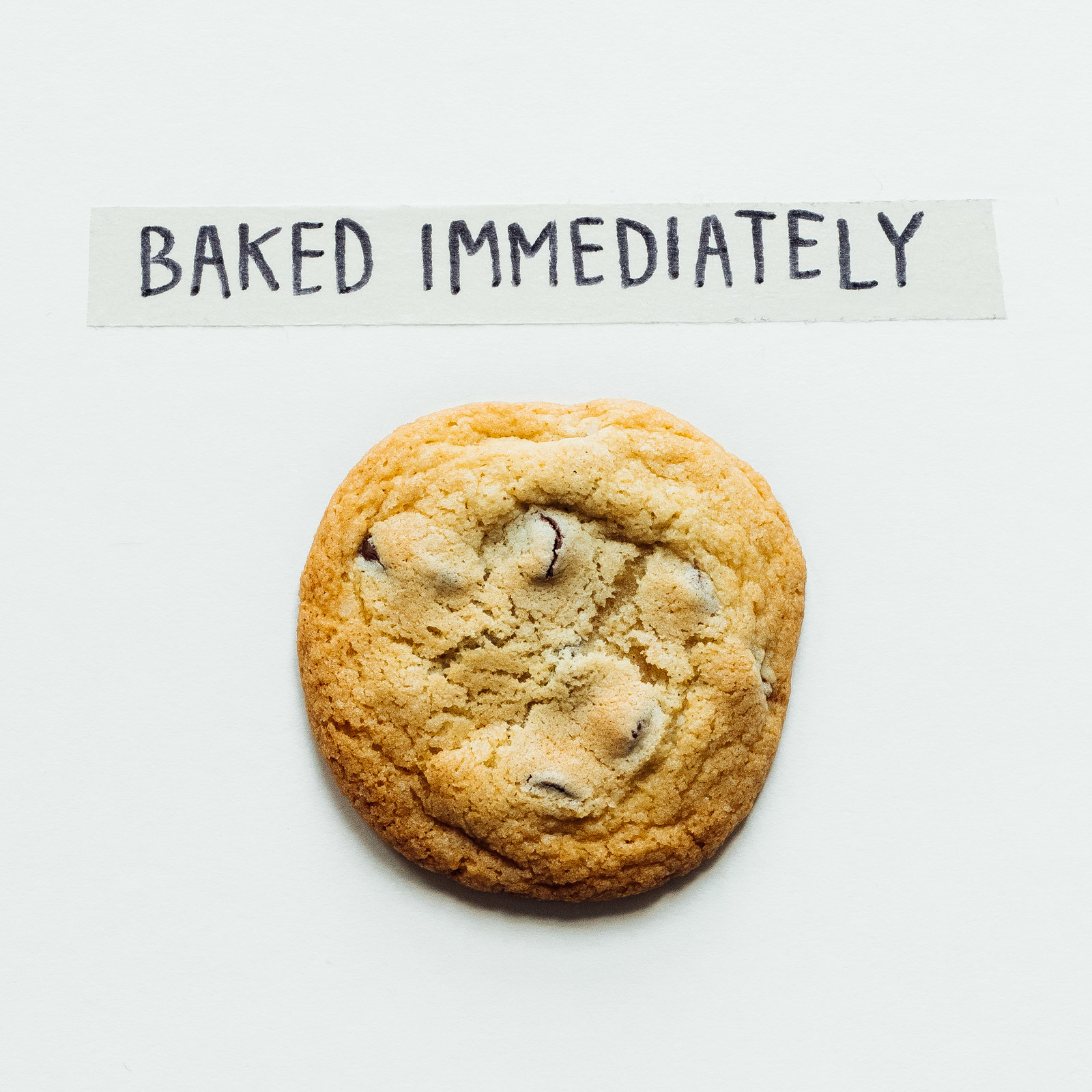
The Science / What We're Expecting: Most home bakers are used to following this method, mostly because it's quick and provides instant results. While this method is certainly the quickest and easiest, it may not be the best. Cold fat takes longer to melt in the oven, so this would explain why dough that's going straight from countertop to oven tends to spread across the pan quickly.
The Test: Bake cookies immediately upon preparing dough. (This is what is called for in the control recipe.)
*It's important to note that while this is what is called for in the original recipe, the bakers at The Toll House Kitchen actually chill the dough overnight, as noted by Ruth Wakefield in her 1953 Toll House Cook Book. However, this detail isn't included in the commercially available recipe that's printed on bags of chocolate chips today.
The Results: As expected, these cookies turned out perfectly fine. They spread fairly wide (but not too wide) and had a small dome in the middle. A classic chocolate chip cookie.
Overall Rating: 8/10
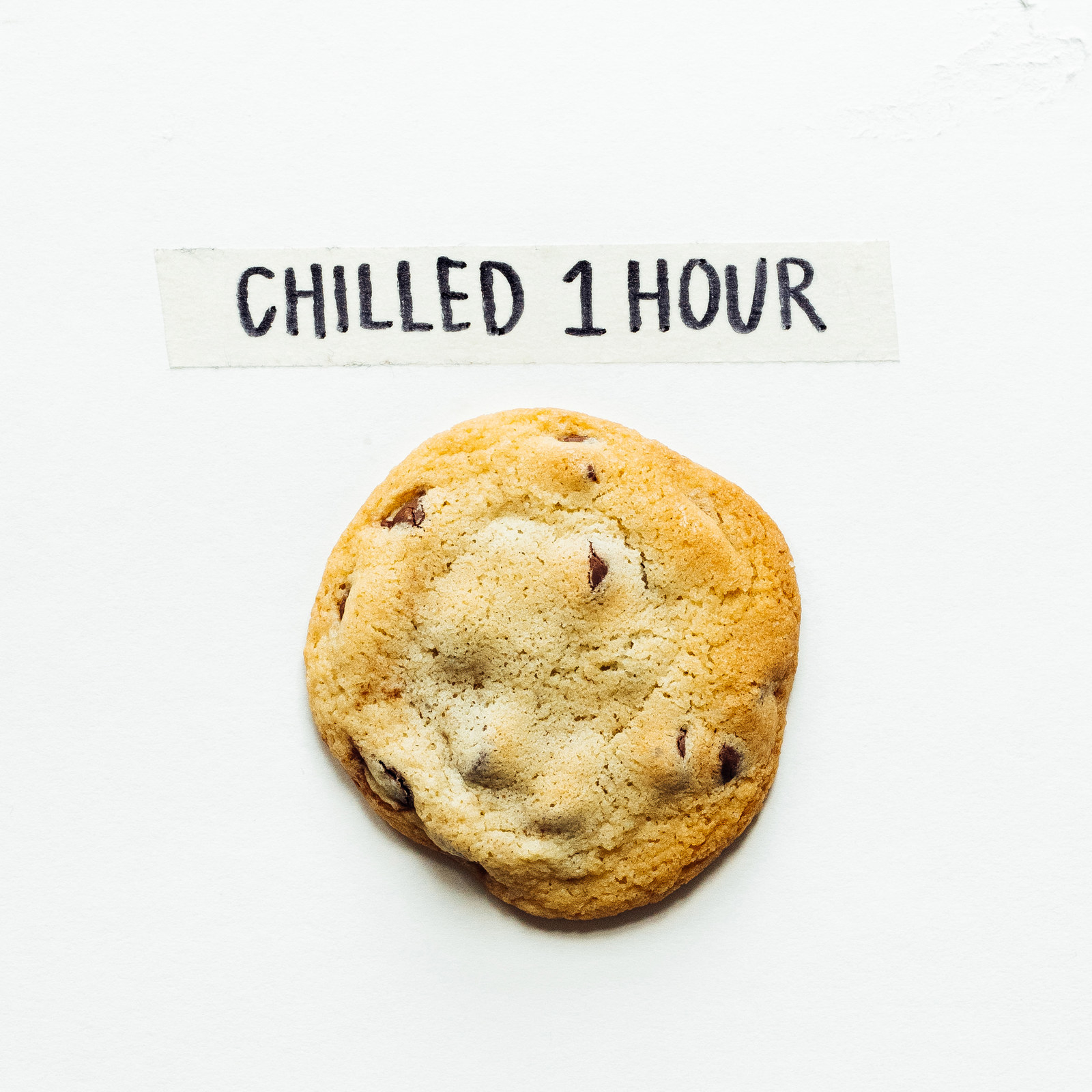
The Science / What We're Expecting: While it's true that you can do a lot in just one hour, in the baking world, one hour is practically no time at all. Well, at least when it comes to resting your dough. Sure, a lot can change with a dough in one hour, but for the most part, resting or ripening your dough for an hour is mostly going to affect how much your cookies spread when they bake.
If you're trying to decrease the degree to which your cookies spread, one hour might just be enough time to let your dough chill in the refrigerator. The litmus test? Touch your dough — you want it to feel relatively firmer than when you stuck it in the fridge in the first place. (This is how you know your fat is chilled.)
The Test: Chill dough for one hour in the refrigerator before baking. All other variables kept as is.
The Results: No real difference compared to the dough that was baked right away. It spread slightly less and had a slightly paler color, but the differences were hardly noticeable.
Overall Rating: 8/10
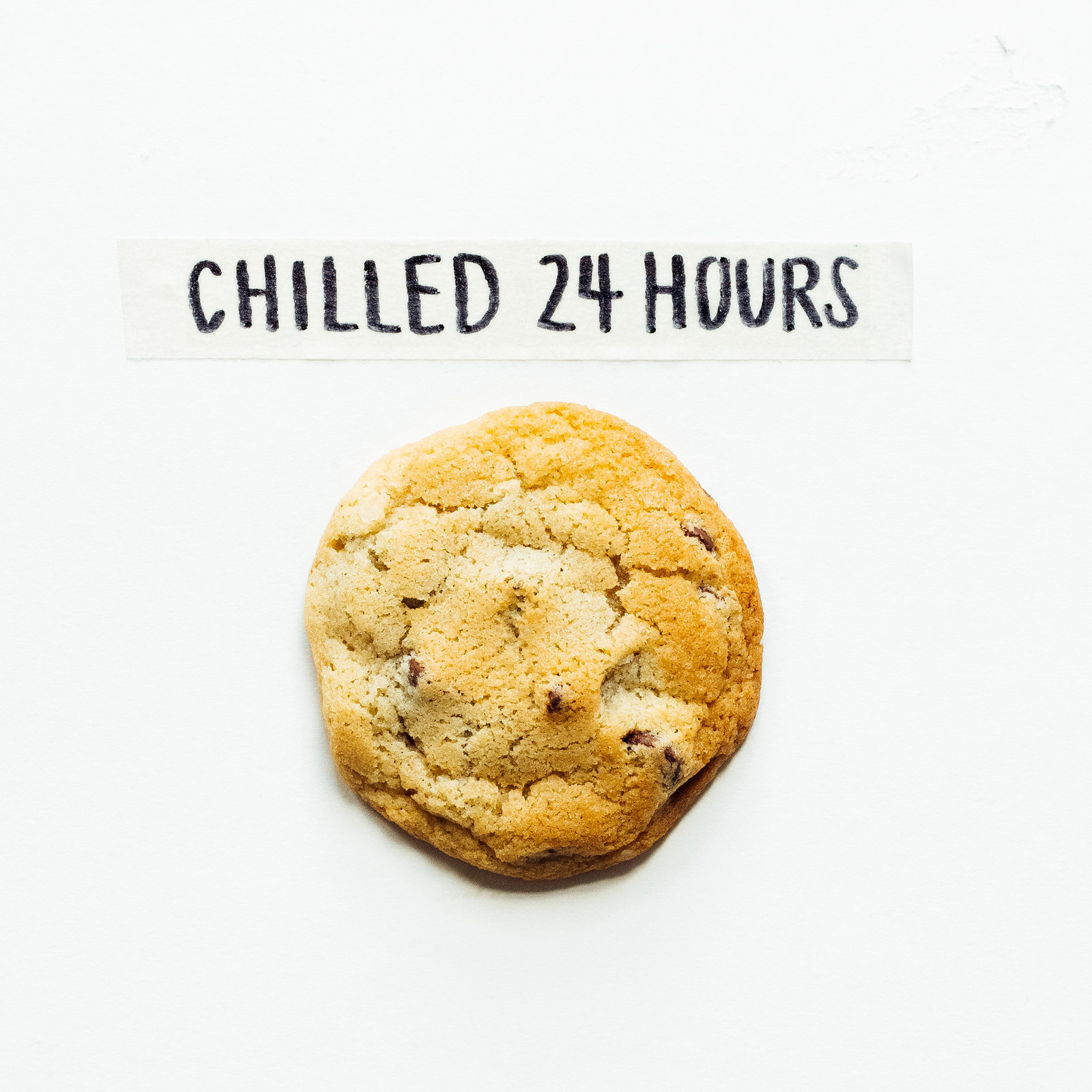
The Science / What We're Expecting: Our research had one primary thing to tell us when we investigated the effect of dough resting time on the final cookie: 24 is the magic number. (Or so the internet told us.)
We've established that resting the dough can dramatically alter many aspects of your final cookie. But at what point does it change from simply altering or intensifying flavor and diminishing the spread of the dough to a transformative experience altogether? According to the plethora of others who've tried it, it's at the one-day mark. Why is that, exactly?
Well, we know that colder dough (or more specifically, colder fat inside your dough) takes longer to heat up in the oven. Without also altering the baking time, the resulting dough will spread less and give you a puffier, more domed cookie.
On a much deeper level, it's been shown that resting dough yields a better flavor, too. And we're not just talking "intense chocolate flavor." We're talking notes of caramel, brown sugar, and a deep, almost toffee-esque bite. But would those differences be noticeable enough to justify the wait? It was time to find out.
The Test: Chill dough for 24 hours in the refrigerator before baking. All other variables kept as is.
The Results: Less spread compared to the cookies chilled for one hour. No noticeable flavor improvements and no significant changes in color. There were a bit more cracks on the surface (an arguably slightly browner), but the differences were so minor that they were once again not worth the wait. (Or we might just be bad at tasting — who knows!)
Overall Rating: 7/10
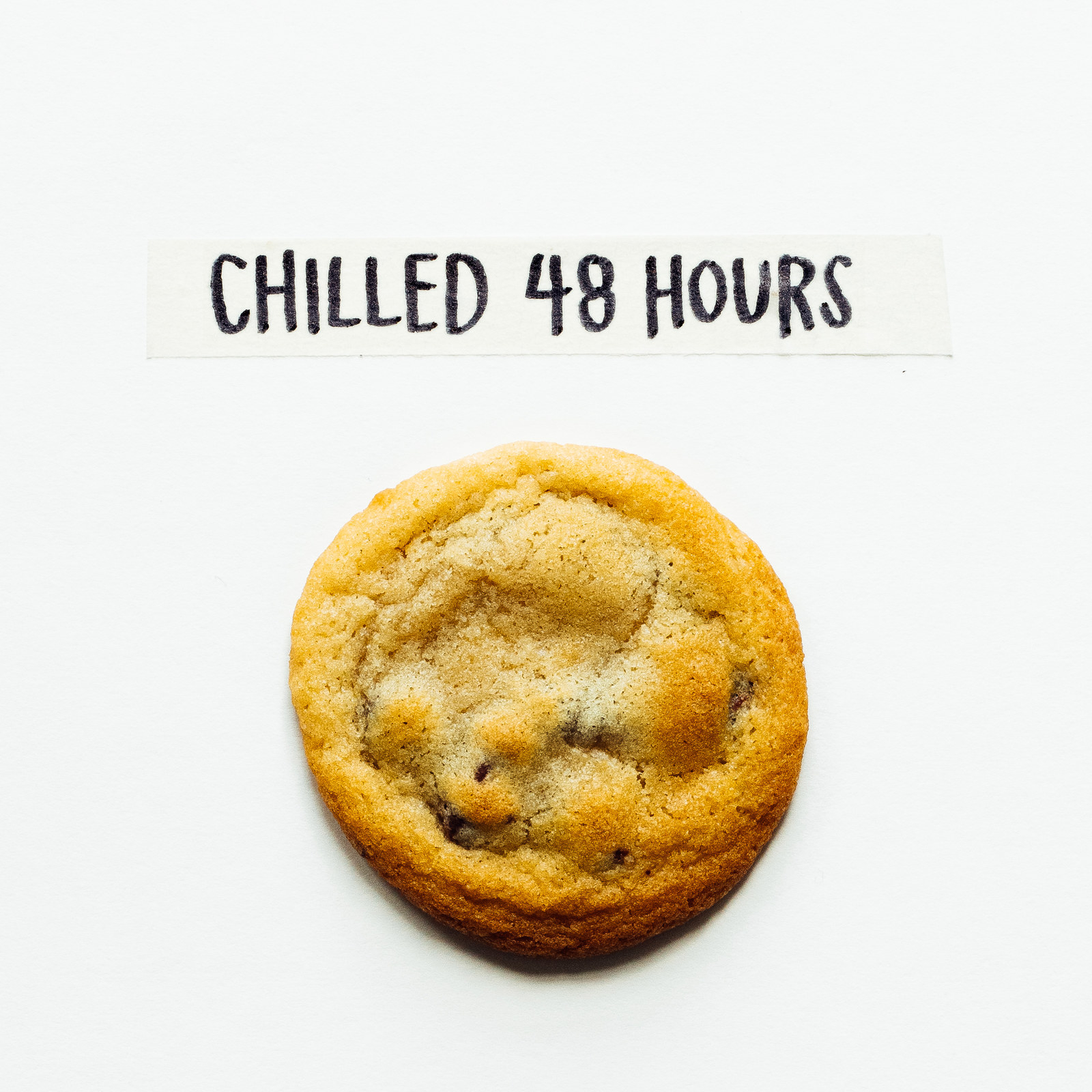
The Science / What We're Expecting: From here on out, it's a test of one's patience.
Assuming that 24 hours has been sufficiently enough time for the dough to hydrate and develop its flavor notes that we alluded to earlier, it's hard to say what 48 hours will do. This is a test of willpower. And whether it bears worthwhile fruit? Well, that's what we're here to find out.
The Test: Chill dough for 48 hours in the refrigerator before baking. All other variables kept as is.
The Results: These cookies — to our surprise — spread a tad bit more (?) than the previous test (but again, nothing major). The color was significantly more golden and the texture was slightly softer. There was slightly more brown sugar flavor going on, but it was an incredibly subtle change. To be honest, the only obvious change was the color.
Overall Rating: 8/10
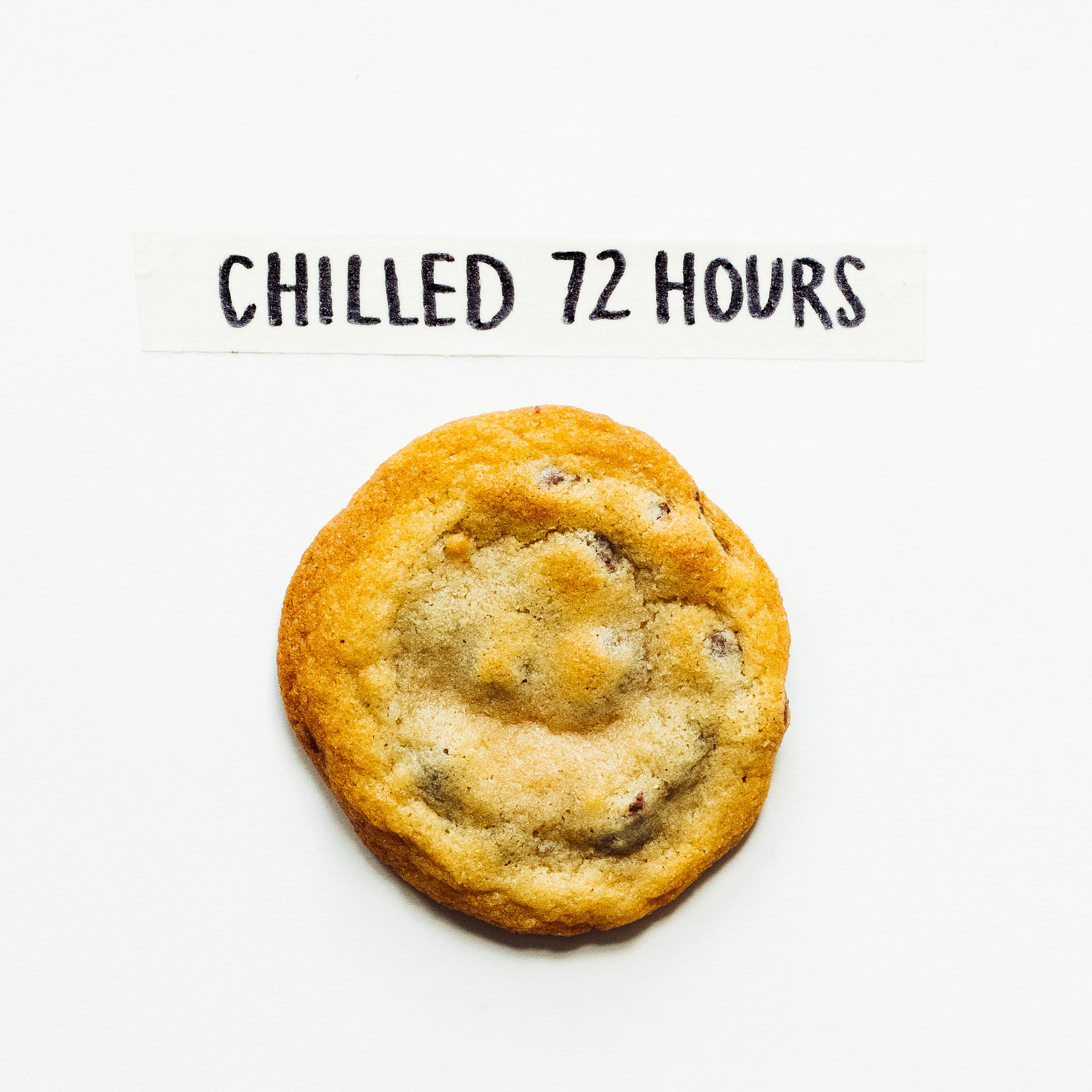
The Science / What We're Expecting: We know. Seventy-two hours just seems downright cruel. Your log of cookie dough has now been sitting in the fridge, practically mocking you, for three days. Granted, the dough probably looks a bit sad now. It's slightly drier, we'd presume, although you've wrapped it in Saran Wrap, but research shows that the longer you wait, the more time the cookies have to mature — so we waited it out.
The Test: Chill dough for 72 hours in the refrigerator before baking. All other variables kept as is.
The Results: Again, more golden color compared to the cookies baked right away. The texture was a bit softer, but the flavor wasn't all that different. A bit more brown sugar flavor detectable, but a minor change.
Overall Rating: 7/10
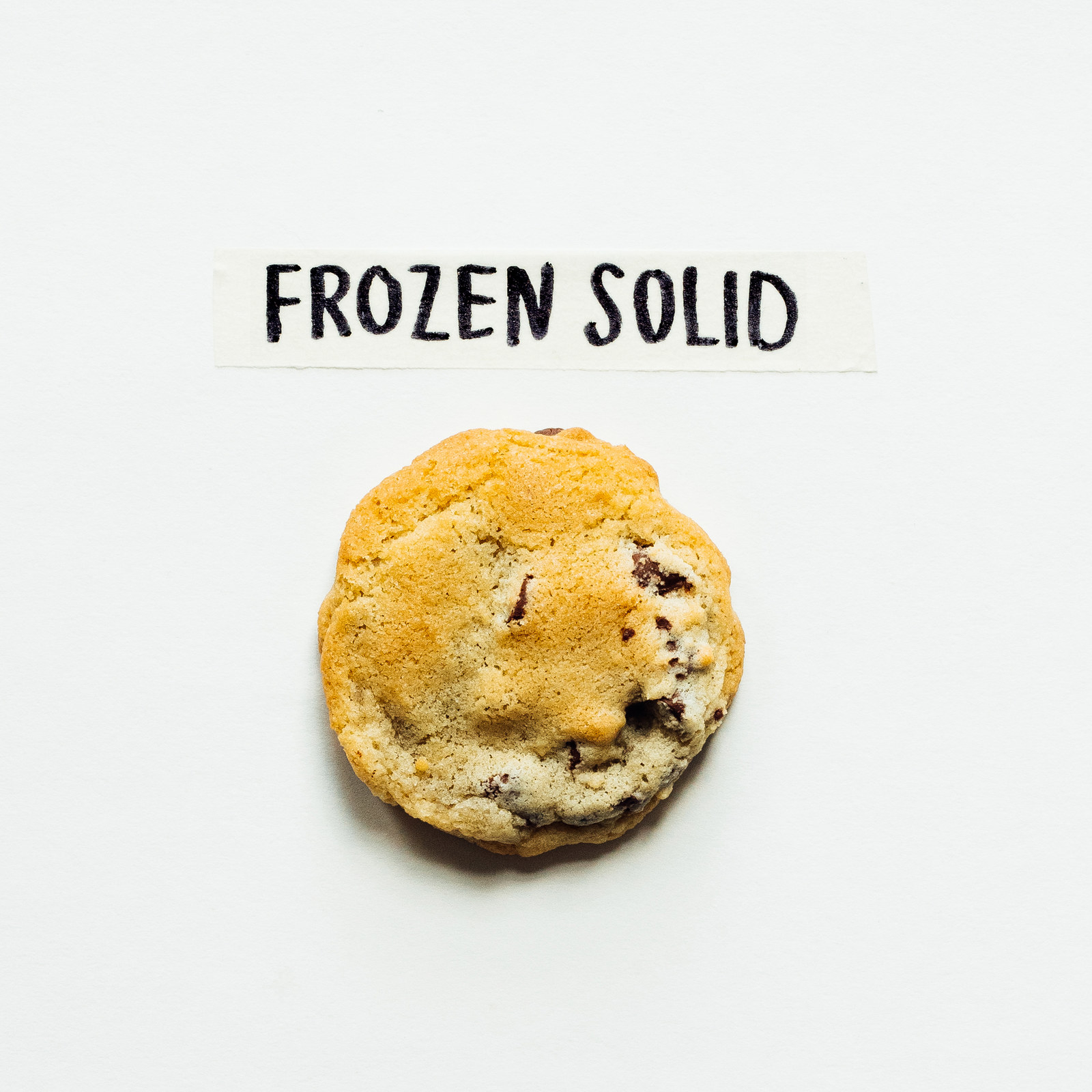
The Science / What We're Expecting: To be honest, this is far, far less painful than some of the other methods. By putting your dough in the freezer, you're accelerating the cooling process drastically. Suddenly, your fat of choice (often butter) is frozen solid and the defrosting that ensues while baking is significantly slowed down.
The biggest advantage? While most of your common fats such as butter melt quickly, the overnight rest in the freezer causes them to freeze solid so without altering your oven time, your cookies simply don't have a chance to spread too much.
The Test: Freeze dough overnight upon preparing. Bake when still frozen solid the next morning. All other variables kept as is.
The Results: Little crackly cookie mounds that hardly spread.
Overall Rating: 2/10
The Biggest Takeaways:
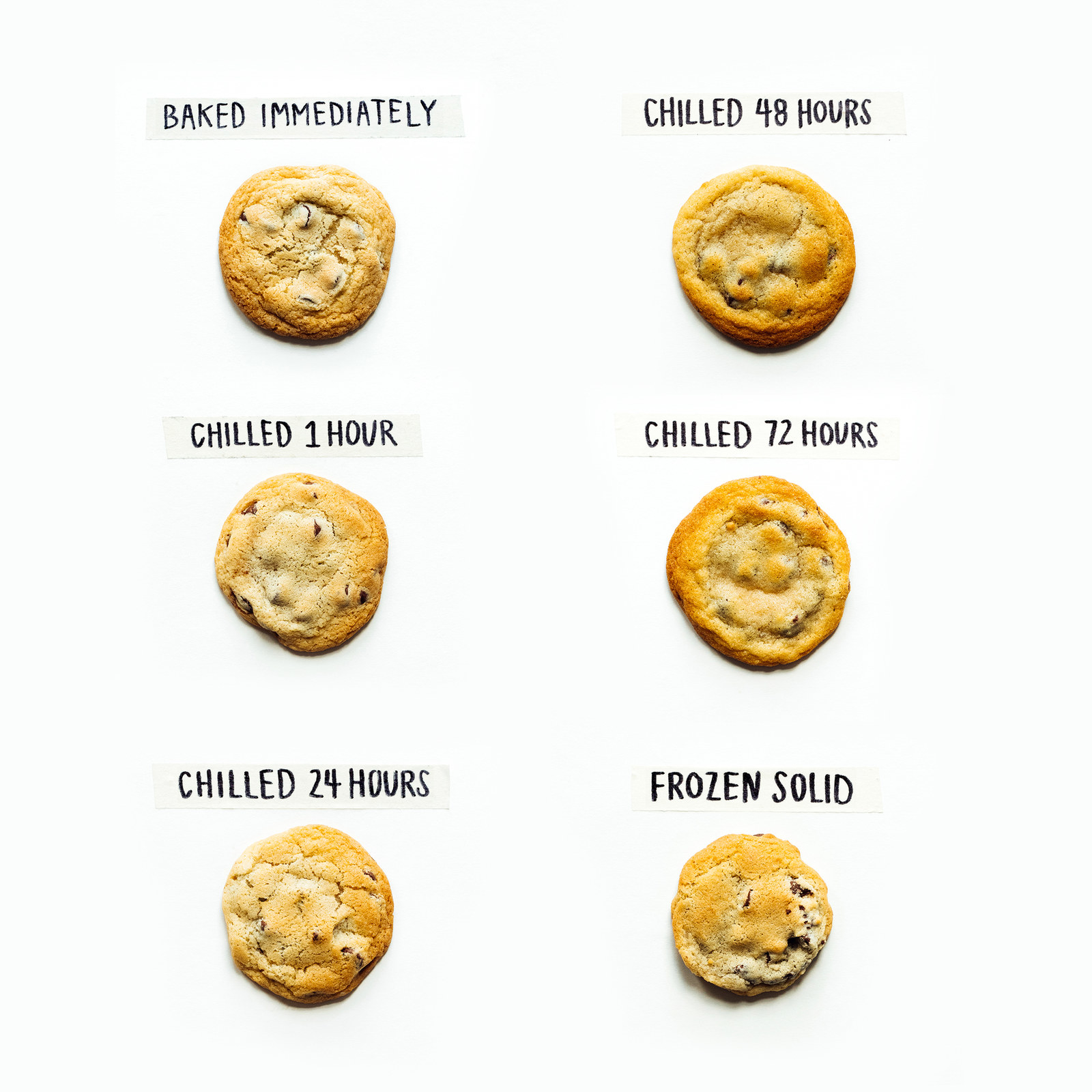
What We Learned: Ripening cookie dough does not make as big as a difference as we initially thought. While there were some minor advantages to letting the dough rest, it was simply not worth the extra effort. (Although maybe we simply can't taste the minor differences other more experienced bakers can — who knows!)
The Biggest Takeaways: When it comes to picking out how long you should let your dough rest, keep these things in mind.
1. Colder dough = less spreading: Colder fat means slower melting, so the more you chill your dough, the less your cookies will spread.
2. Ripening the dough makes little difference in flavor: Despite what we've been told about ripening cookie dough, we found no significant improvements in taste or texture when ripened for a long period of time. The only change we noticed was the color and spread.
3. Letting dough rest is all about hydration: Beyond controlling the spread, ripening cookie dough also gives the flour extra time to absorb the liquid in the dough — so a quick resting time may actually prove beneficial.
This post is part of BuzzFeed's Best Chocolate Chip Cookie Guide. To read through the entire experiment, click through the links below:
Main Post | Sugar Type | Fat Type | Flour Type | Chocolate Type | Leavening Agent | BuzzFeed Food's Best Chocolate Chip Cookie Recipe

